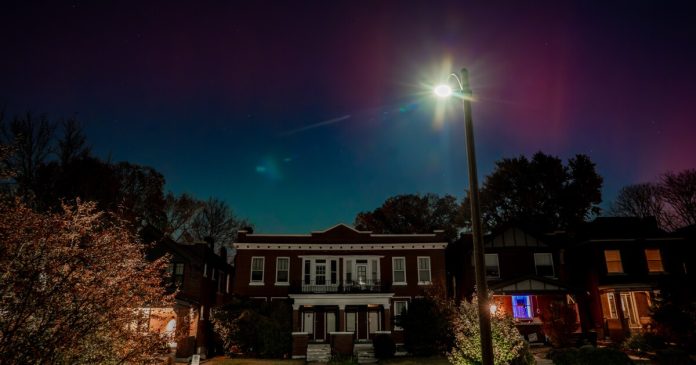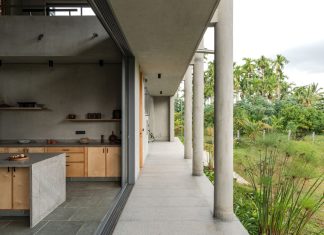Missouri and Illinois residents are being treated to a rare spectacle this week as powerful geomagnetic storms light up skies across the state with the aurora borealis — more commonly known as the northern lights.
A geomagnetic storm happens when charged particles from the sun’s atmosphere collide with Earth’s magnetic field. In addition to creating dazzling curtains of color, these storms can disrupt technology on Earth, from satellites and GPS systems to radio communications and the power grid.
On Tuesday night, the skies glowed with ribbons of pink and green — more easily visible in rural areas than cities like St. Louis and Kansas City. The colorful show stems from coronal mass ejections, massive bursts of plasma and magnetic energy from the sun’s outer atmosphere that expand as they race toward Earth.
There is another chance to catch the display is expected Wednesday night, but it may not be visible with the naked eye. The best views of the aurora borealis are generally best visible just after sunset.
If you’re hoping to photograph the aurora in Missouri and Illinois, here are a few tips for documenting the celestial scene:
Location
- Travel: Light pollution can make photographing the night sky tricky. If you can, drive away from city lights and find an area with a clear view facing true north — that’s where the aurora is most visible.
- Framing: Try to include a familiar landmark or object in the foreground to make your photo unique to your community.
Equipment
You don’t need a professional camera setup to make stunning photos.
- With a phone: Turn off your flash and turn on “night mode.”
- Stabilize: Keep your camera steady — rest it on a tripod, fence or solid surface. Using a timer for the shutter helps avoid shake.
- Clean your lens: A soft microfiber cloth can make all the difference.
- Wide angle: A wider lens will help capture more of the sky.
- Apps: There are several phone applications, like My Aurora Forecast & Alerts, to help you plan your excursion.
Settings
- On a camera: If you’re using a DSLR or mirrorless camera, try a long exposure (slow shutter speed), low ISO and wide aperture (low f-stop) — balancing those three elements is key to capturing the light that’s more faint in the Midwest.
- File format: Make your images in RAW format if you can. It keeps more image data, giving you flexibility to edit later.
Have some fun
- Enjoy the show: Every aurora looks different. If your photos aren’t turning out, take a breath and adjust. The experience itself — standing under a glowing sky with friends, family or a loved one — is as much of the magic as documenting the show.
Do you have an exciting image from this week’s northern lights? Send it to social@stlpr.org for a chance to be featured on our platforms.
NPR’s Rachel Treisman and Mansee Khurana contributed to this report.







